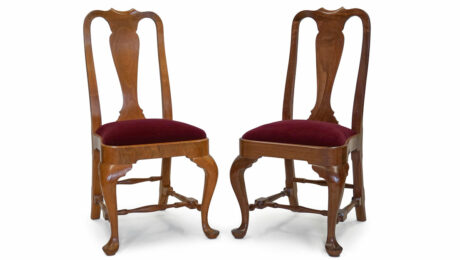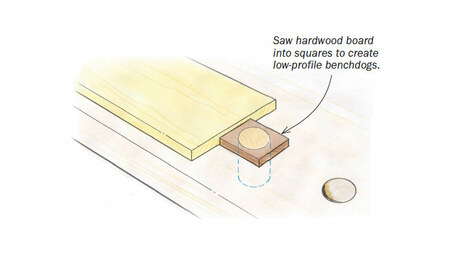Rethinking the Workbench
Vic Tesolin loves his MFT workbench, and he will gladly tell you why.
A workbench is more than just a flat surface—it’s your work partner, your creative platform, and, let’s be honest, sometimes a very expensive junk collector. The bench is where projects come to life, tools pile up, and good ideas (and bad ones) get tested. But what a workbench should be has changed a lot over the years, and that’s exactly what I’ll be talking about.
Gone are the days when every respectable workbench had to be a massive slab built from three oak trees and weighing more than a small car. Don’t get me wrong—I love a classic Roubo bench as much as the next hand-tool nerd. But somewhere along the way, we started acting like bench design peaked in the 18th century and that anything lighter or different was somehow inferior.
Enter the modern workbench—more specifically, the MFT (multifunction table). These benches are amazing in the modern shop. They’re lighter, often modular, and designed to handle a variety of tasks, whether you’re hand-cutting dovetails or breaking down a sheet of plywood with a track saw. They’re not just a surface to work on; they’re a workholding system, a clamping grid, and a flexible platform that adapts to the job at hand.
What I love most about the MFT style is how approachable it is. You don’t need a 400-sq.-ft. dedicated shop to make one work. If you’re a minimalist working out of a single-car garage, an MFT can fold up, roll away, or even double as a finishing table. It’s the bench for people who want function first.
But here’s the thing: The workbench conversation isn’t just about tradition versus technology. It’s about rethinking what you actually need from your bench. Do you plane boards by hand for hours on end? Or do you mostly cut, sand, and assemble with the help of power tools? Are you moving your bench around, or does it live in one spot? Your answers to those questions should shape what your bench looks like—not a 250-year-old drawing from a French woodworking manual.
In my lecture on this topic at Woodworking in America this year, I like to mix in some laughs, a few strong opinions, and some live demonstrations of just how capable these modern benches can be. My goal isn’t to convince you to throw out your Roubo, but to get you thinking critically about the bench you have—or the bench you plan to build—so it actually suits the way you work today.
Because at the end of the day, a bench isn’t just a piece of furniture. It’s the heart of your shop. And whether that heart is a traditional beast or a lightweight MFT, the important thing is that it works for you.





















Comments
Well said!
Woodworking for 30 years has allowed me to change what a bench should be for me and respect what it is for others.
It fits the space, the work, and the worker. There is likely more it fits, and that is ok!
My hope is it allows you to safely enjoy your work.
They are fine until small fasteners etc fall through the holes and you find yourself crawling through the sawdust looking for parts. Just a few carefully located holes will work just as well.
I agree...I can't see a need for so many holes to snag corners and grooves to collect dust and generally be in the way. But to each his own, I guess the world doesn't need yet another Roubo article.
I was always concerned about using planes. Doesn't it move when trying to plane something?
What about chiseling, I'd imagine it's missing that solid sound and feel. Don't get me wrong, I'm a small shop guy and folding up my work bench would be nice. So much so, I dreamed about doing the Moravian workbench.
Log in or create an account to post a comment.
Sign up Log in